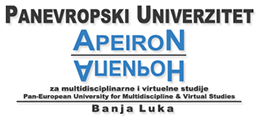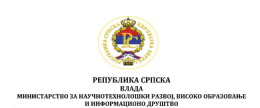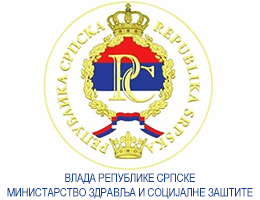Influence of Basic- Kinesthetic Abilities Footbal Players on Situational- Kinesthetic Abilities
Volume 3, Issue 2 (2013)
Volume 3, Issue 2 (2013)
Influence of Basic- Kinesthetic Abilities Footbal Players on Situational- Kinesthetic Abilities
Abstract:
The main objective of this research is to determine the impact of motor skills players (as predictor variables) on situational-motor readiness players (such criterion set of variables). The problem to be treated in this study was to determine the influence of some latent anthropological dimensions of basic - motor abilities (speed,explosive strength and agility) to situational-motor skills players (handling the ball, keeping the ball speed and power hitting through the ball).
The research was conducted on a sample of 64 players from four football club from the Tuzla Canton, which compete in the second division of the FBiH, the "North". To determine the impact of the system of basic - motor abilities on the results of situational- motor abilities of the players used multiple regression analysis .
The survey findings: Based on these results, we see that as significant predictors showed variable MBFTAP - hand tapping, MAGOSS - eight with bending and MFE20V - running at 20 m high start. Variables segment speed and agility have shown a significant impact. These areas form the basis of motor control, motor control, and these areas are very important for the proper performance of any movement structures both in football and in other kinesiology activities. Variable MFE20V - running at 20 m high start, which also proved to be a significant predictor, and criterion set of variables we have variables to estimate power hitting through the ball, and to achieve better results in the situational-motor skills is essential explosive power.
Based on the results obtained by the applied statistical methods for multivariate data analysis (regression analysis), we can conclude that the impact of basic - basic motor skills (speed, explosive strength and agility) to situational - motor skills (handling the ball, keeping the ball speed and power at impact balls) significant.
The research was conducted on a sample of 64 players from four football club from the Tuzla Canton, which compete in the second division of the FBiH, the "North". To determine the impact of the system of basic - motor abilities on the results of situational- motor abilities of the players used multiple regression analysis .
The survey findings: Based on these results, we see that as significant predictors showed variable MBFTAP - hand tapping, MAGOSS - eight with bending and MFE20V - running at 20 m high start. Variables segment speed and agility have shown a significant impact. These areas form the basis of motor control, motor control, and these areas are very important for the proper performance of any movement structures both in football and in other kinesiology activities. Variable MFE20V - running at 20 m high start, which also proved to be a significant predictor, and criterion set of variables we have variables to estimate power hitting through the ball, and to achieve better results in the situational-motor skills is essential explosive power.
Based on the results obtained by the applied statistical methods for multivariate data analysis (regression analysis), we can conclude that the impact of basic - basic motor skills (speed, explosive strength and agility) to situational - motor skills (handling the ball, keeping the ball speed and power at impact balls) significant.
Keywords:
football, basic-kinesthetic abilities, situational-kinesthetic abilities of football players, variables, regression analysis
Full Text:
References:
- Arnason, A. & al. (2004). Physical fitness, injuries, and team perfomance in soccer. Med Sci Sports Exerc, 36(2), 278-85. doi: 10.1249/01. MSS.0000113478.92945.CA; PMid: 14767251.
- Bangsbo, J. (2000). The Physiology of soccer: With special reference to intense physical exercise. Acta. Physiol. Scand, 150, 1-156.
- Bala, G., Malacko, J., Momirović, K. (1982).Metodološke osnove istraživanja u fizičkoj kulturi (Methodological Foundations for Research in Physical Culture), Novi Sad.
- Chamari, K., & al. (2004). Field and laboratory testing in young elite soccer players. British Journal of Sports Medicine, 38, 191-196. doi: 10.1136/bjsm.2002.004374; PMid: 15039258; PMCid: PMC1724764.
- Elsner, B.(1974). Vpliv nekaterih manifestnih in latentnih antropometrijskih in motoričnih spremljevalk na uspeh v igri nogometa, Magistarski rad (The Influence of Some Manifest and Latent Anthropometric and Motor Abilities on Success in Football), Master’s Thesis, Faculty of Physical Education in Zagreb, Fakultet za fizičku kulturu u Zagrebu, Zagreb.
- Elsner, B., Metikoš, D. (1983). Odnosi između bazičnih i motoričkih sposobnosti i uspješnosti u nogometu(1-177) (Relations between Basic and Motor Abilities in Football, 1-177), (Kinesiology, Vol. 15, No. 2), Kineziologija vol.15 br:2, Zagreb.
- Gabrijelić, M. (1972).Neke situacione psihomotorne sposobnosti potencijalno-aktualno značajne za uspjeh djece u nogometnoj igri (11-21) (Some Situational Psychomotor Abilities Potentially-Topically Important for Children’s Success in Football (11-21), Kinesiology. Kineziologija, Zagreb.
- Gabrijelić, M., Jerković, S., Aubrecht, V., Elsner, B. (1983).Relacije situaciono motoričkih testova i ocjena uspjeha nogometaša (Relations between Situational Motor Tests and Assessments of Footballers’ Success), Kineziologija, Zagreb.
- Gredelj, M., Metikoš, D., Hošek, A., Momirović, K.(1975). Model hijerarhijske strukture motoričkih sposobnosti . Rezultati dobiveni primjenom jednog neoklasičnog postupka za procjenu latentnih dimenzija 5, 1-2, 7-82 (Model gradation of motor ability structure. Results obtained by neoclasic action for latent dimension assessment). Kinesiology. Kineziologija. Zagreb.
- Hadžić, E. (2007). "Utjecaj brzine, eksplozivne snage i agilnosti na situacione testove nogometaša", Magistarski rad, (Influence of speed, explosive power and agility on football players situational tests“, Master's Thesis), Faculty of Phisical and Sports, Tuzla University , Fakultet za tjelesni odgoj i sport, Univerzitet u Tuzli, Tuzla.
- Kapidžić, A. (2007). Utjecaj antropoloških karakteristika na rezultate situacionih testova u nogometu. Doktorska disertacija (The impact of anthropological characteristics of the results of situational tests in football.) Doctoral dissertation. Teachers College Department of Sports and Health. Nastavnički fakultet Odsjek za sport i zdravlje, Mostar.
- Marković, G., i Bradić, A. (2008). Nogomet: Integralni kondicijski trening (Football: Integrated fitness practice). Zagreb, HR: Udruga tjelesno vježbanje i zdravlje.
- Nićin, Đ. (2000). Antropomotorika (Antropomotorics). Novi Sad, RS: Fakultet fizičke kulture.
- Reilly, T., Bangsbo, J., & Franks, A. (2000). Anthroprometric and physiological predisposition for elite soccer. Journal of Sport Science, 18, 9669-9683.
- Stolen, T., Chamari, K., Castagna, C., & Wisloff, U. (2005). Physiology of Soccer. Sport Med, 35(6), 501-536.
- Strudwick, A., Reilly, T., & Doran, D. (2002). Antropometric and fitness profiles of elite players in two football codes. Journal of Sports Medicine and Physical Fitness, 42(2), 239-242. PMid: 12032422.






